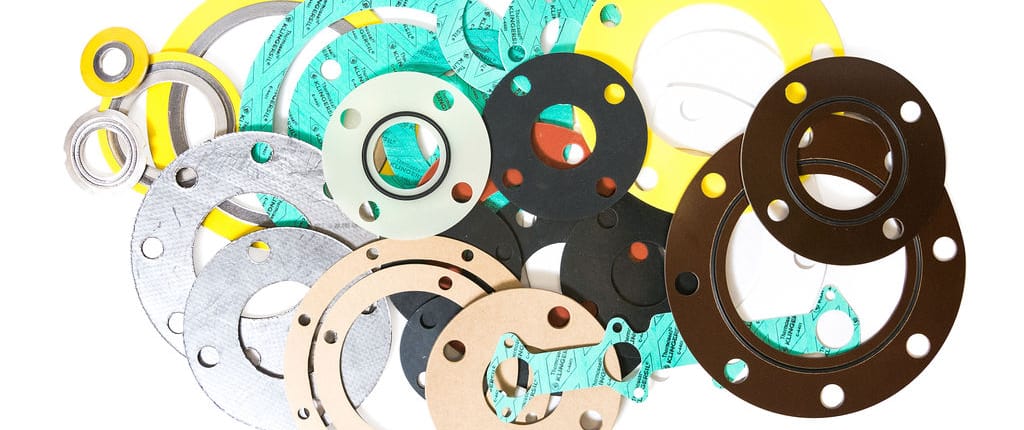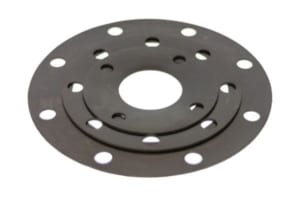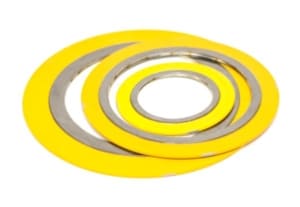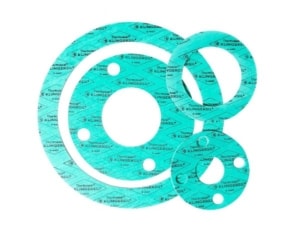The Function of a Gasket is to create and maintain a static seal between two stationary, imperfect surfaces of a mechanical system, designed to contain a wide variety of liquids or gases. The gasket must be able to maintain this seal under all the operating conditions of the system including extremes of temperature and pressure. The performance of the gasket is affected by a number of factors. All of these factors must be taken into consideration when selecting a gasket.
NON-METALLIC
Non-metallic gaskets can be made from CNAF (Compressed non-asbestos fiber), PTFE, Rubber, Teflon or Graphite. These gaskets compress easily with low tension bolting. They’re generally used for low pressure applications and low temperatures. One exception is graphite gaskets, which can be used for temperatures as high as 460 degrees centigrade.
METALLIC
Metal is used for ring type joints in high-pressure applications, such as oil and gas supply production. RTJs are also used on valves and pipework, assemblies in refineries and other process industries. They seal by an initial line contact or a wedging action as the compressive forces are applied. Metal ring type gaskets are available with oval and octagonal cross sections. Octagonal include the BX type designed to seal pressure up to 20,000 psi, in accordance with API 6A pressure ratings.
COMPOSITE
Composite gaskets are a combination of metal and nonmetal material based on service requirement. Spiral wound, Metal Jacketed, and Kamprofile gaskets are well known in the composite gasket category. They’re used in a wide range of pressure and temperature services. Composite gaskets are cost effective as compared to metal gaskets, but careful handling is required. Composite gaskets are used on raised face, male-female, and tongue and-groove flanges.
UIP has the technology to automate just about any shape required for your application. Nonmetallic materials are available in widths up to 60 inches and sheet lengths of up to 50 feet depending on the product. For oversized gaskets, UIP has the capability of creating custom segmented gaskets for ease of handling and installation.
In order to ensure a successful seal many factors must be considered. The gasket material must be resilient and rugged enough to overcome any irregularities in the mating surfaces; resist extrusion and creep; and prevent blowouts under various operating conditions. Material thickness is also important when choosing a non-metallic gasket. The thinnest material that a flange application will
allow should be considered however, the material should be thick enough to compensate for any surface irregularities or flange parallelism. Thinner gaskets can handle an increased level of bolt load and will reduce the amount of bolt stress that is lost due to relaxation. Additionally, thinner material reduces the gasket area which limits the amount exposed to attack from internal pressure and/or an aggressive application.
UIP suggests contacting one of our knowledgeable team members to select the correct material for your application. There are a number of gasketing materials available and new materials emerge often. Material specifications are also available in our literature and on our website to assist in proper material selection.





